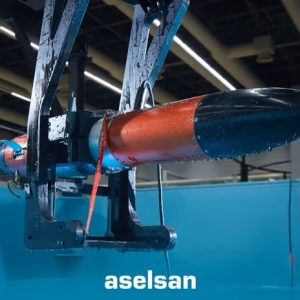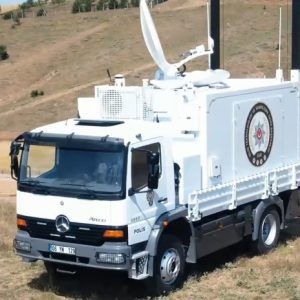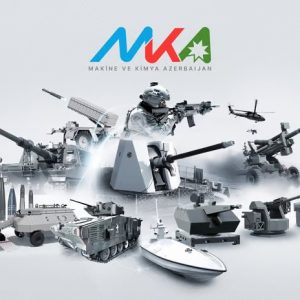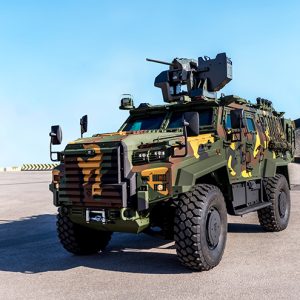
SANCAR AUSV Live‑Fire Trials Validate ADVENT ROTA
The SANCAR AUSV live‑fire trials in the Marmara Sea marked a measurable step for Türkiye’s unmanned surface warfare. The 12.7 mm stabilised weapon was fired under ADVENT ROTA control and fleet supervision, demonstrating task handover, swarm manoeuvres and coordinated strikes through the ADVENT combat management system (CMS) network [1][2][3]. In effect, SANCAR moved from demonstration to an operationally credible node in a naval digital kill chain.
What the live‑fire trials proved
SANCAR achieved accurate engagements with its 12.7 mm remote weapon station while under ADVENT ROTA control. The test campaign exercised task handover, swarm operations and coordinated strikes, the foundational building blocks of network‑centric surface warfare in contested littorals [1][2].
Crucially, ROTA is the unmanned mission layer of ADVENT CMS; it runs on the craft and speaks the same protocols as shipboard ADVENT. Any platform equipped with ADVENT can assume control, pass tasks, or combine fires as the tactical picture evolves—without adding bespoke consoles to every ship. This cuts integration cost and accelerates fleet adoption [3].
ADVENT ROTA: compressing the maritime kill chain
The ADVENT CMS on any platform can act as the UxV control station and—via ROTA—manage payloads with operator assistance, eliminating the need for extra control stations [3].
This tight coupling reduces decision latency in choke points and base‑defence arcs. SANCAR therefore behaves as a combat‑integrated AUSV, not a standalone robot.
Mission set and payload roadmap
Jointly developed by HAVELSAN and Yonca Shipyard, SANCAR is designed for port and base protection, ISR, mine countermeasures (MCM) and SAR. The sensor suite includes navigation radar, AIS, EO/IR cameras, sonar and 360° video. Current and planned payloads span a 12.7 mm RWS—now validated—and guided missile options that enable layered deterrence. Open data lists twin diesels with waterjets, sprint speeds above 40 kt and patrol endurance near 400 nm at economy speed, suiting high‑tempo littoral duty [4].
Strategic context: why these trials matter
Kill‑chain compression. With ADVENT ROTA tied to ADVENT CMS, SANCAR can sense, decide and engage with fewer relays—raising the chance of first‑round effects against fleeting threats [3].
Scalable force packages. The trial’s swarm and coordinated‑strike drills preview task‑organised AUSV packs cued by a frigate, a shore C2 node or a maritime patrol UAV—vital for base defence and choke‑point security where threat volume shifts quickly [1][2].
Cost‑imposition. A modular AUSV with a 12.7 mm RWS—and later guided missiles—can impose a cost penalty on fast, small craft while keeping crews outside the engagement zone. The same hull can pivot to MCM or ISR as payloads mature, protecting investment across the life cycle [4].
Interoperability and export signal
The ADVENT ecosystem underpinning SANCAR is now an export article. In March 2025, HAVELSAN signed with the Chilean Navy to modernise two M‑class frigates with ADVENT CMS. Sources describe a four‑year programme, signalling sustained integration and training. While SANCAR is not part of that project, a common ADVENT stack can lower barriers for partners that later adopt unmanned surface assets—aligning industrial diplomacy with tactical interoperability [5][6].
What to watch next
Missile integration: timelines and rules of engagement for AUSVs carrying guided weapons.
MCM validation: mine‑countermeasure payloads in real‑sea clutter, where autonomy and false alarms matter.
Cross‑domain handover: ship‑to‑shore‑to‑air‑to‑AUSV control under contested spectrum, where ADVENT’s multi‑link pedigree is decisive [3].
Further Reading
- Underwater optical comms for UUVs: throughput, range and autonomy trade‑offs
- Autonomous maritime vessels: swarming surface craft reshape littoral defence
References
- Turkish‑built AUSV completes live‑firing tests in Marmara Sea — Naval Today (16 September 2025)
- SANCAR Armed USV Completes Live‑Fire Trials — Naval News (16 September 2025)
- HAVELSAN — ADVENT CMS & ROTA (official PDF, UxV support)
- HAVELSAN — SANCAR Armed USV (product page)
- HAVELSAN signs agreement with the Chilean Navy for ADVENT CMS — Naval News (29 March 2025)
- Chilean Navy ADVENT CMS modernisation will run ~four years — Zona Militar (31 March 2025)
- SANCAR AUSV completes live‑fire trials in Türkiye — Naval Technology (17 September 2025)
Editor’s note: All dates are given in absolute form. Data and specifications cross‑checked against official HAVELSAN documentation and leading naval outlets.
Bottom line: By rooting control and effects in ADVENT/ROTA—and by drilling swarm and coordinated‑strike tactics—HAVELSAN and Yonca Shipyard delivered a platform that scales with software and payloads. SANCAR now stands as a credible near‑term option for maritime protection and denial across NATO‑aligned littorals.











